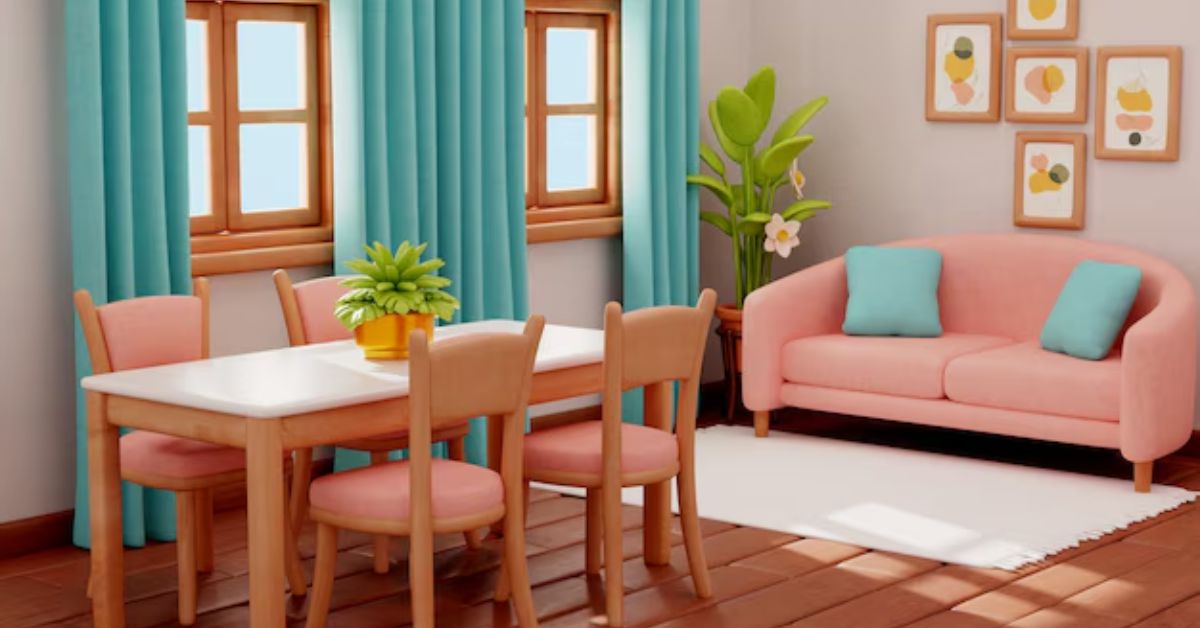The dining room has long held a place of prominence in homes, particularly during the Victorian era when formal dining was a symbol of social status. Lavish disappearing dining rooms were a space to entertain guests, host large family meals, and showcase wealth and taste through ornate furnishings and tableware. As family meals were often a central event, dining rooms were designed with elegance and function in mind.
However, the traditional disappearing disappearing dining rooms has gradually shifted from being a formal, separate space to becoming more flexible in modern homes. The rise of open-plan living, where kitchens, dining areas, and living rooms merge into one continuous space, has contributed significantly to this change. Instead of dedicating an entire room to dining, families now prefer multi-functional areas that adapt to a variety of needs—whether that’s casual dining, working, or entertaining.
Why Are Disappearing Dining Rooms Disappearing?
Changing Lifestyles and Habits
Several lifestyle changes have driven the shift away from formal disappearing dining rooms. Firstly, modern families often lead busy, fast-paced lives, which reduces the frequency of formal sit-down meals. Instead of gathering around a dining table for every meal, families might eat at kitchen islands, in front of the television, or even in separate rooms, reflecting a more casual, on-the-go approach to eating.
Additionally, with the rise of technology and remote work, many people now use dining spaces as home offices or study areas. The need for adaptable, multi-functional spaces in the home has led to the transformation of dining rooms into workstations, playrooms, or even libraries, further diminishing their original purpose.
The Influence of Open-Concept Design
Another key reason behind the disappearance of dining rooms is the popularity of open-concept floor plans. This design trend, which gained traction in the mid-20th century, removes barriers between living areas, creating a seamless flow between the kitchen, dining, and living spaces. Open-concept homes often feature kitchen islands or breakfast nooks, which replace the need for a separate, enclosed dining room.
In open-plan designs, the dining space becomes part of a larger, informal gathering area rather than being isolated as a formal room. This integration makes the home feel more spacious and versatile, aligning with the modern preference for easy, casual living.
Smaller Homes and Apartments
As urbanization increases and living spaces become more compact, disappearing dining rooms are frequently one of the first casualties in floor plan design. In smaller homes or apartments, space is a precious commodity, and dedicating a room solely for dining is often considered impractical. Instead, people opt for dining tables that double as workspaces or foldable options that can be tucked away when not in use.
Real estate trends show that many buyers today prioritize efficient, multi-functional spaces over traditional room divisions, especially in metropolitan areas where square footage is limited. As homes shrink in size, the formal dining room is increasingly seen as an unnecessary luxury.
Impact on Social and Family Life
Shifting Family Dynamics
The disappearance of the disappearing dining roomsreflects changes in how families interact and share meals. While family dinners around the table were once a nightly ritual, they have become less common in many households. Busy schedules, different work shifts, and extracurricular activities often lead to families eating at different times, making formal sit-down dinners a rarity.
This shift doesn’t mean that family bonding has diminished; rather, it has evolved. Many families now gather in more informal settings, such as the kitchen or living room, while watching TV or doing homework. While these spaces may not offer the same structured environment as a dining room, they still provide opportunities for conversation and connection.
Changing Social Gatherings
The dining room has traditionally been the focal point for entertaining guests, particularly during holidays or special occasions. However, modern social gatherings have become more relaxed, with people gravitating towards open spaces. Where guests can move freely between the kitchen, dining area, and living room. Buffets, potlucks, and casual get-togethers have replaced formal dinner parties, and the layout of contemporary homes reflects this shift.
Many homeowners now prefer open layouts where the host can prepare food in the kitchen while still engaging with guests in the adjacent living or dining areas. The disappearance of formal dining rooms allows for a more inclusive and interactive atmosphere during social events. Where people can gather in one large, shared space.
Interior Design: Adapting to Modern Living
Multi-Functional Spaces
As disappearing dining rooms, interior designers are focusing on creating spaces that serve multiple purposes. Dining tables are often incorporated into larger living areas, doubling as workspaces, homework stations, or places for crafts and games. This shift has prompted designers to focus on flexible furniture and layouts that can easily adapt to different needs.
For example, extendable dining tables, modular seating, and built-in storage. Solutions allow for efficient use of space in homes without a dedicated dining room. These solutions provide the flexibility to host meals when needed. Without taking up valuable square footage when the table is not in use.
The Rise of Kitchen Islands
One of the most popular alternatives to traditional disappearing dining roomsis the kitchen island. In open-concept homes, the kitchen island often serves as the central gathering point. Where people can cook, eat, and socialize all in one space. Kitchen islands with built-in seating have become the modern replacement for formal dining rooms. Offering a more casual, comfortable environment for meals and conversation.
Conclusion: The Future of Dining Spaces
The disappearance of disappearing dining roomsreflects broader societal changes, including the shift towards more flexible, informal living spaces. As family dynamics, lifestyles, and interior design preferences evolve, the traditional dining room may continue to fade into obscurity, replaced by multi-functional areas that cater to a wide range of needs. However, this change doesn’t mean that dining rooms are gone forever. For some, the dining room will remain a cherished space for family gatherings and holiday celebrations.
In a world where space is often limited, and the demand for adaptability is high. The dining room has transformed into something more fluid. Whether integrated into the kitchen, living room, or repurposed for a different function,. Dining spaces will continue to adapt to modern life, blending the past with the present. As homes continue to evolve, so too will the way we gather, eat, and connect within them.

